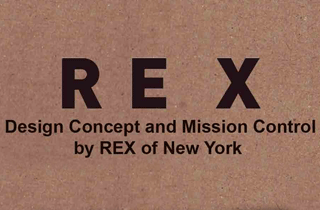Just recently Metropolis Magazine published this interview with Stanly Tigerman. I think it was probably more explosive than what they expected or perhaps not. This is the type of stuff that sells magazines. I decided to post a selected excerpt of it here not because I agreed with everything. In fact I think a lot of his arguments are implicative of taking a high road that treads on the border of career suicide, especially if you are hellbent on becoming a famous architect. Nevertheless, I think it is worth reading because he successfully illuminates a lot of the ethical cracks in the architectural establishment's celebrity machine i.e. (the schools, magazines, critics etc). The question is; How do you balance ethics in the current equation that includes branding, marketing, starchitecture, and starchitecture hungry dictatorial regimes?

So let’s talk about your idea of architecture as a social response. Why is that such a factor in your design?
I think it’s about being responsible. Architecture is a pursuit that ought to be seen in a more responsible light than it is. And I think that architects ought to be responsible to society in a number of ways and they need to do that for two reasons: number one is that they’re—presumably—human beings, and secondly, if we don’t do it, who the hell is going to?
I see my very good friends
Peter Eisenman and
Frank Gehry, who are very good architects. They are encouraging—inadvertently or not—as teachers, students to…how do I say…
to emulate them. I find that problematic. I come from a generation where people like Harry Cobb—you know who he is, right?—and Paul Rudolph were very good at
bringing us as good as we were. They didn’t try to encourage us to design in their image—not that Cobb had an image—nonetheless they produced a panoply of students whose work ranges from the extreme left to the extreme right. It’s an indication of a Socratic posture that can only be seen as admirable. I think things have happened since Paul’s time. Rome is burning.
We have to behave responsibly. That’s what’s fabulous about architecture; it’s like many other things in life. It’s transparent. If you’re interested in
marketing and branding, you’ll be known for it. If you’re interested in being perceived as an aesthete, you’ll be known. If you’re socially responsible, you make your own judgments. You, Eva Hagberg. Me, Stanley Tigerman. Everyone else. I think that’s where architecture is at. It’s taken me my whole life to figure that out.
I’m not very smart. It takes a long time to figure this crap out. But I finally did. Do you want to spend a lifetime doing suburban villas for princes and princesses, or do you do something for people who really need what you do? Do you make your own decisions?

So one of the ways you try and change things is by teaching. What’s your plan there?
If you look at an educational curriculum, do you find any courses on ethics? I don’t think so. [EH, internally: My mom teaches ethics.] What you find is a lot of courses on computer technology to make you useful in an office. Is that what education is about? These are interesting questions. You gotta ask them. What about the AIA? You want to look at the website of the AIA ethics clause? When I joined the AIA forty-three years ago you couldn’t displace another architect without letting him know. You couldn’t undercut fees. You couldn’t market, you couldn’t brand. Now you can undercut fees, you can market, you can brand. And the AIA forces it at their conventions by spending tons of time on shit like marketing and branding! I’m asking YOU the questions.
Well….
I mean, why the fuck doesn’t Metropolis branch outside this interview? Spend the bulk of every goddamn issue on these ethical subjects, instead of branding Hariri + Hariri, or Peter, all of whom are very good architects of course. There’s this other side, the crappy architects you guys publish, at least these guys are really good. But I think encouraging signature work in formalistic ways is discouraging to people who are trying to be responsible, say, environmentally. Where were architects in the leadership field? Where were architects when ADA loomed large on the horizon? Were they leaders in terms of sustainability? Absolutely not.
Things didn’t make any sense to me in architecture school. We were shown images, then told, “You won’t understand this for five years but that’s ok.” I thought then when I didn’t get it that it just meant I was stupid. I think now that was an unfortunate way to teach. Why is architectural education so incomprehensible?
It’s to
perpetuate a myth. In the same way that people talk in an arcane language. It’s not so that you can understand them, but so they can retain the myth. And architects are no different. You present it as part of a
mystique.
From Metropolis Magazine : http://www.metropolismag.com/cda/story.php?artid=3333

































































